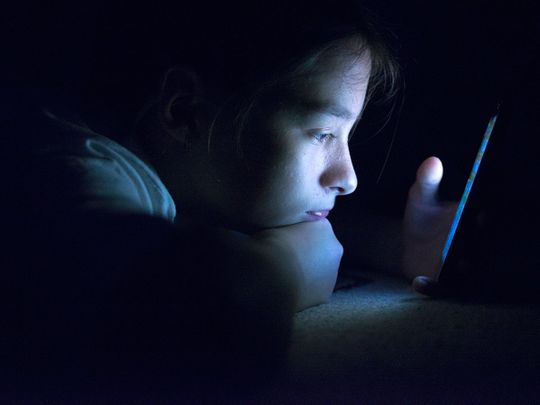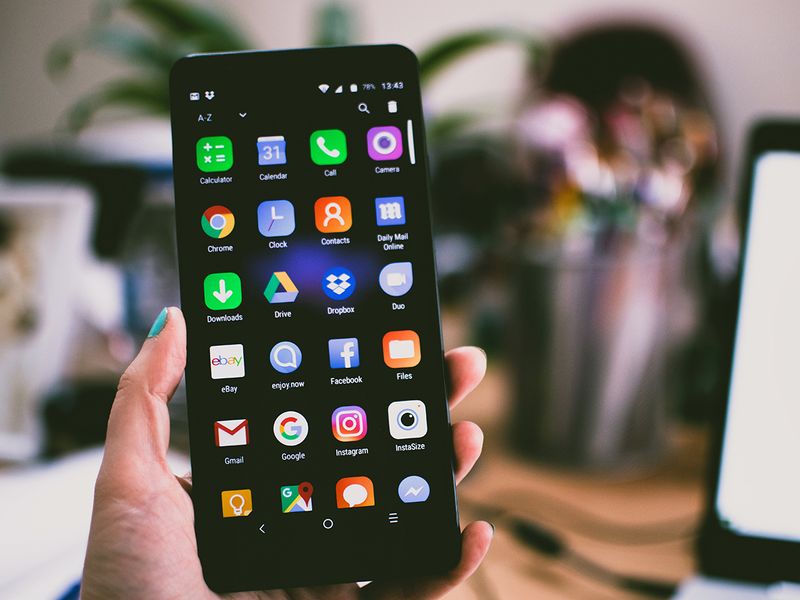
Smartphones are extremely useful. But they do have a dark underbelly. Their use in classrooms by students is now banned in a number of countries.
Numerous studies indicate that, indeed, mobile phone usage is not only habit-forming, it is also addictive; possibly the biggest non-drug addiction of the 21 st century.
Several studies bear this out. Researchers have identified the activities that push smartphone use beyond its “tipping point” – where it crosses the line from a helpful tool to one that undermines our personal well-being and that of others.
As the functionality of cell-phones continues to expand – so is the addiction to this seemingly indispensable gadget.
DSM criteria for behavioural addiction
Psychiatrists use the Diagnostic and Statistical Manual of Mental Disorders, Fifth Edition, (DSM-5) as a key standard in diagnosing behavioural issues. A product of more than 10 years of effort by hundreds of international experts in all aspects of mental health, this criteria helps them recognise and understand behavioural addiction.
DSM-5 points out the diagnostic criteria for behavioural addiction which fall under four general categories — impaired control, physical dependence, social problems and risky use.
DSM-5 describes the experience of cravings, strong urges, and disruptions in one's functioning related to a particular behaviour, as per the American Psychiatric Association (2013).

Which countries banned smartphones in classrooms?
From January this year (2024), the Netherlands has become the latest country to ban digital devices in classrooms.
The digital revolution holds immeasurable potential but, just as warnings have been voiced for how it should be regulated in society, similar attention must be paid to the way it is used in education,
The ban covers mobile phones, tablets, and smartwatches. Devices will be allowed only in case of specific situations – for medical reasons or pupils with disabilities.

Earlier, similar moves were made by France, Italy (teachers collect students' smartphones at the beginning of the day) and Finland.
What does UNESCO say about smartphone use in class?
According to a 2023 UNESCO report, excessive use of technology such as smartphones and computers in education can negate their benefits, especially when lacking teacher guidance.
The UN agency has highlighted that even proximity to smartphones can lead to student distraction in the classroom, ultimately resulting in poorer academic performance.
“The digital revolution holds immeasurable potential but, just as warnings have been voiced for how it should be regulated in society, similar attention must be paid to the way it is used in education,” Audrey Azoulay, Director General of UNESCO, said in a press release.
“Its use must be for enhanced learning experiences and for the well-being of students and teachers, not to their detriment.”
While the move has renewed the debate on the effects of mobile phones on students, a 2021 study published in the journal Computers in Human Behavior Reports showed that smartphone addiction negatively impacts students' learning and overall academic performance. Further, findings suggest that the greater the use of a phone while studying, the greater the negative impact on learning and academic achievement.
Drug addiction vs phone addiction: What’s the difference?
In a 2012 study, a team of researchers led by psychologist Seyyed Salman Alavi cited that behavioural addiction such as internet addiction is similar to drug addiction – except that in the former, the individual is not addicted to a substance; rather, the individual is addicted to the behaviour or the feeling brought about by the relevant action.
“The physical signs of drug addiction are absent in behavioural addiction,” Alavi wrote. “Others have stated that behaviourally-addicted individuals have certain symptoms and will undergo the same consequences brought about by addiction to alcohol and drugs as well as other obsessive behaviours.”
An earlier study published in the Journal of Behavioral Addictions in March 2013 by James Roberts of Baylor University in Texas, and Stephen Pirog of Seton Hall University in New Jersey, have broadened the definition of “addiction” to encompass behaviours – such as gambling, sex, exercise, eating, internet, and mobile phone use.
Baylor elaborated on a previous definition made by Dr. Mark Griffiths, a chartered psychologist and Professor of Behavioural Addiction at the Nottingham Trent University, UK, who cited six core components of addiction.
6 core components
Dr Griffiths cited the key components of addiction in a 2005 study published in Frontiers in Psychiatry. These are:
#1. Salience
This occurs when the activity becomes the single most important activity in the person’s life and dominates their thinking (preoccupations and cognitive distortions), feelings (cravings), and behaviour (deterioration of socialised behaviour). For example, even if the person is not actually engaged in the activity they will be constantly thinking about the next time that they will be (i.e., a total preoccupation with the activity).
#2. Mood modification
This refers to the subjective experiences that people report as a consequence of engaging in the activity and can be seen as a coping strategy (i.e., they experience an arousing “buzz” or a “high” or paradoxically a tranquilising feel of “escape” or “numbing”).
#3. Tolerance
This is the process whereby increasing amounts of the activity are required to achieve the former mood-modifying effects. This basically means that for someone engaged in the activity, they gradually build up the amount of the time they spend engaging in the activity every day.
#4. Withdrawal symptoms
These are the unpleasant feeling states and/or physical effects (e.g., the shakes, moodiness, irritability, etc.) that occur when the person is unable to engage in the activity.
#5. Conflict
This refers to the conflicts between the person and those around them (interpersonal conflict), conflicts with other activities (e.g., work, social life, hobbies, and interests) or from within the individual (e.g., intra-psychic conflict and/or subjective feelings of loss of control) that are concerned with spending too much time engaging in the activity.
#6. Relapse
This is the tendency for repeated reversions to earlier patterns of excessive engagement in the activity to recur, and for even the most extreme patterns typical of the height of excessive engagement in the activity to be quickly restored after periods of control.
Behavioural addiction
Roberts and Pirog found that phone addiction is similar to substance addiction, as they are characterised by a habitual urge or compulsion to engage in a behaviour despite its negative impact on one's well-being.
They argued that any frequently-repeated behaviour that induces “specific reward effects through biochemical processes in the body” holds addictive potential. A fundamental aspect of addiction is “loss of control over the behaviour”, they stated.
Other studies suggest that mobile phone usage is characterised by addictive, compulsive, and habitual behaviours – these patterns are more pronounced particularly among students, who are heavy users of mobile technologie.
Research which used a comprehensive 33-item questionnaire to a sample of students also revealed that mobile phone usage is not only habit-forming but indeed addictive.
Out of the control
As smartphone use goes out of control, it leads to the following downsides:
Mental health implications:
Excessive smartphone use correlates with elevated levels of anxiety, depression, and stress. Additionally, frequent phone checking is associated with symptoms akin to attention disorders, underscoring the mental health risks (Journal of Behavioral Addictions; Computers in Human Behavior; Psychology Today; APA).
Sleep quality:
Poor sleep quality is prevalent among heavy smartphone users, exacerbating mood disorders and negatively affecting overall well-being (Frontiers in Psychiatry).
Impact on daily life:
Chronic phone use contributes to feelings of nervousness, loneliness, and dissatisfaction, significantly impairing quality of life (Pew Research Center).
It doesn’t end there. A study by RescueTime found that the average person spends 3 hours and 15 minutes on their phone every day, with the top 20 per cent of smartphone users spending over 4.5 hours a day on their phones.
According to a survey by CareerBuilder, 55 per cent of employers believe that cell phones are the biggest productivity killers in the workplace.
Udemy, meanwhile, found that employees spend an average of 56 minutes per day using their mobile devices for personal reasons while at work, which adds up to five hours of lost productivity per week.
Who is most addicted to phones?
Studies have shown that men are more likely to be addicted to their phones than women. According to a study by BankMyCell, 54 per cent of male respondents reported symptoms of addiction, while only 46 per cent of female respondents reported the same.
• According to a study by Common Sense Media, teenagers aged 13-18 have the highest rate of smartphone addiction, with 50 per cent of them feeling that they are addicted to their phones.
• Young adults aged 18-24 also have a high rate of smartphone addiction, with approximately 36 per cent of them reporting symptoms of addiction.
• Adults aged 25-34 are the third most addicted age group, with around 27 per cent of them admitting to being addicted to their smartphones.
• The percentage drops significantly for older age groups, with only about 10 per cent of adults over the age of 65 feeling addicted to their phones, according to Pew Research Center.
How do I know if I'm addicted to my phone?
Signs that you may be addicted to your phone include constantly checking for notifications, feeling anxious when you can't check your phone, using your phone in inappropriate situations (such as while driving or during meals), and neglecting other responsibilities in favour of using your phone.
However, it's important to use cell phones in moderation and avoid becoming overly reliant on them.
Smartphone addiction: How to break free
If cell phone use is becoming problematic, experts suggest these strategies to break free from addiction:
- Parents should impose limits on their children's screen time and encourage healthy habits from an early age.
- Monitor, set limits on smartphone use.
- Avoid becoming overly reliant on them.
- Use apps to track and manage screen time.
- Practice mindfulness to reduce stress and anxiety.
- Seek support from friends, family, or a mental health professional.
- Consider therapy, support groups, and digital detox programs that help reduce reliance on technology.
What are we to do?
These insights underscore the pervasive nature and detrimental effects of smartphone addiction.
It's clear that smartphone overuse, and addiction, is a widespread issue. It affects people of all ages, genders, and ethnicities. While there are many benefits of mobile phone use, it's important to recognise the negative impact they can have on productivity, mental health, and daily life. It’s crucial for individuals to monitor their own usage and seek help if they feel they are becoming addicted.
Experts suggest that individuals should adopt healthier usage habits. By addressing these challenges, we can strive towards a more balanced relationship with technology, fostering improved productivity and mental well-being.








